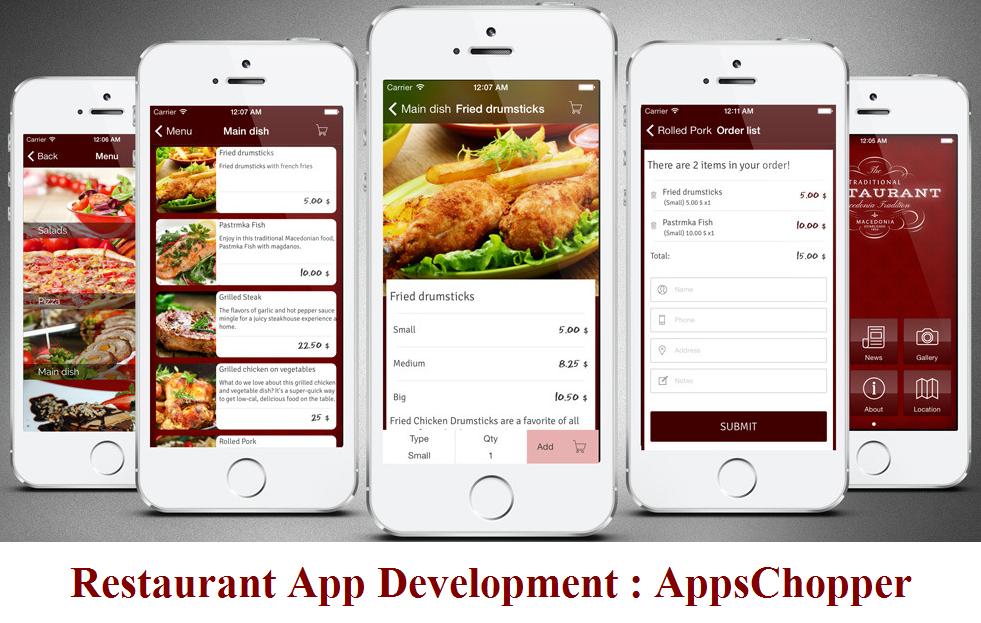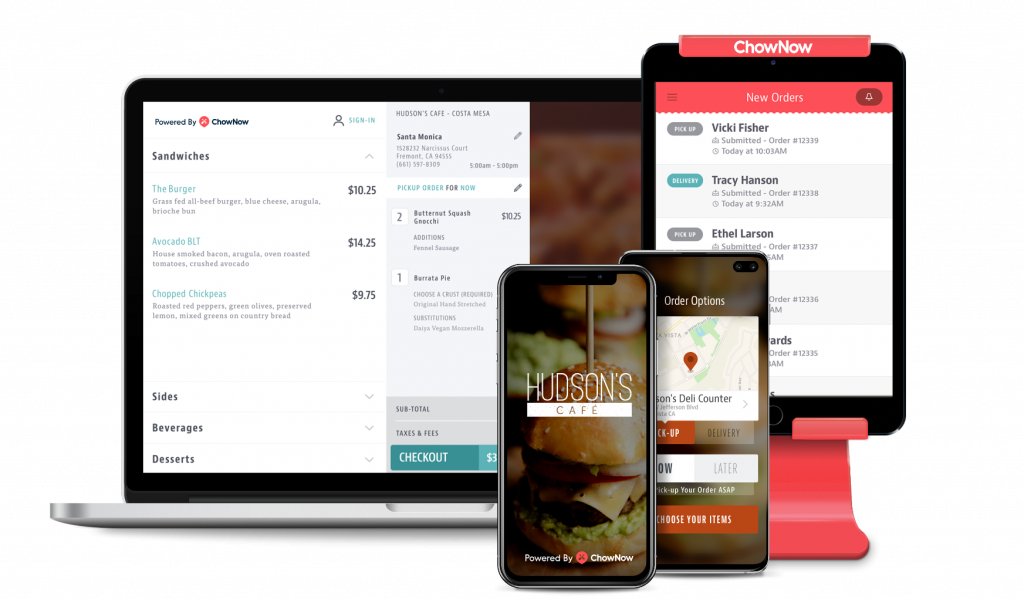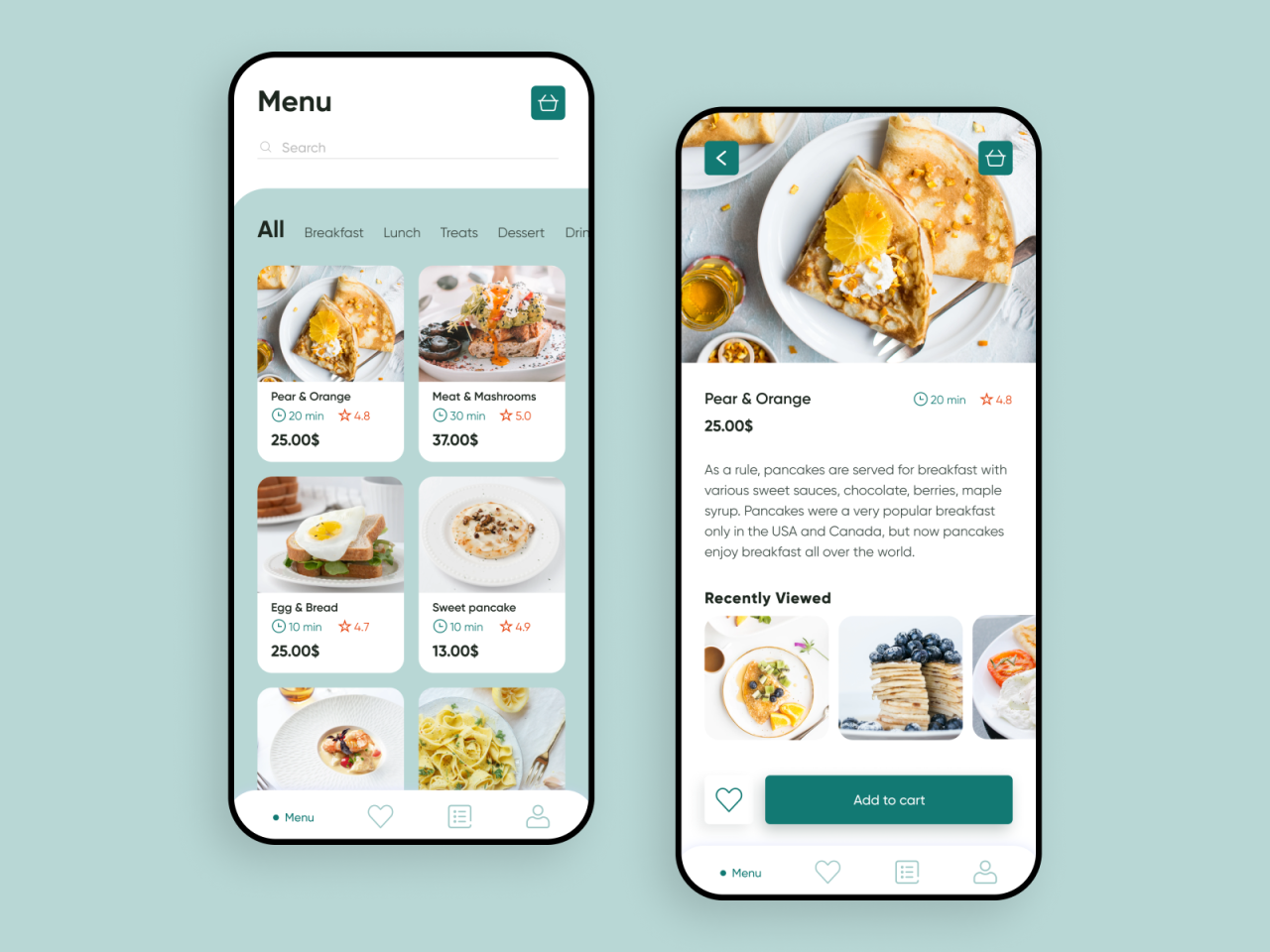In today’s fast-paced world, ordering food from your favorite restaurants has never been easier. Mobile apps have revolutionized the dining experience, transforming how we interact with eateries. From the initial order placement to the final delivery, these apps streamline the entire process, offering a convenient and efficient alternative to traditional methods. This exploration delves into the evolution, features, and impact of these apps, examining them from both the user and restaurant perspectives.
The landscape of mobile ordering apps is vast and diverse. From quick, on-the-go options to sophisticated experiences for fine dining, there’s an app for every need. This analysis will examine the top players, their unique offerings, and the factors that influence user satisfaction. We’ll also consider the advantages and challenges these apps present for restaurants, and ultimately, forecast the future of this evolving dining sector.
Introduction to Mobile Ordering Apps
Mobile restaurant ordering apps have become ubiquitous, transforming the way we dine and how restaurants operate. From quick bites to fine dining experiences, these apps streamline the ordering process, enhancing convenience and efficiency for both customers and businesses. This evolution has fundamentally reshaped the restaurant industry, allowing for personalized experiences and greater control over the entire ordering journey.
The rise of mobile ordering apps is a direct response to the increasing demand for convenience and speed in modern life. Customers value the ability to order from anywhere, anytime, and restaurants benefit from reduced wait times and increased efficiency in their operations. This shift has created a dynamic landscape where businesses are constantly adapting to meet evolving customer expectations.
Overview of the Mobile Ordering Landscape
The mobile ordering landscape is diverse and competitive, encompassing a wide range of apps catering to various needs and preferences. These apps facilitate ordering, payment, and delivery, often offering features like loyalty programs, special offers, and real-time tracking of orders. The seamless integration of technology into the dining experience is rapidly changing consumer behavior.
Features of Mobile Ordering Apps
Mobile ordering apps typically offer a range of features designed to enhance the customer experience. These include intuitive interfaces, easy navigation, real-time order tracking, customizable options, secure payment processing, and integration with loyalty programs. Such features are critical to maintaining customer satisfaction and repeat business. For example, detailed menu descriptions, high-quality images, and the ability to view nutritional information are crucial for informed decision-making.
Types of Restaurants Utilizing Mobile Ordering
Mobile ordering apps are used by a wide variety of restaurants, from fast-food chains to fine-dining establishments. Fast-food restaurants often utilize these apps for drive-thru or delivery orders, streamlining the process for customers and reducing wait times. Casual dining restaurants leverage mobile ordering to manage in-house orders, reducing lines and improving table turnover. Even fine-dining restaurants are increasingly incorporating mobile ordering to facilitate reservations and pre-ordering for larger parties, providing a level of customization and efficiency that was previously unavailable.
Comparison of Mobile Ordering Pros and Cons
| Feature | Pros | Cons |
|---|---|---|
| Speed of Order Placement | Reduced wait times for customers, quicker order processing for restaurants, increased order volume. | Potential for errors if the system is not properly managed or used, need for training staff on new technologies. |
| Customer Experience | Convenience of ordering from anywhere, improved tracking of orders, ability to customize orders and view menus. | Technical issues, unreliable delivery services, difficulties with specific dietary needs or modifications. |
| Restaurant Efficiency | Increased order volume and reduced wait times, better management of kitchen workflow, potential for higher profit margins. | Initial investment costs for implementing the system, potential for increased labor costs (staff training, support), security concerns with handling customer data. |
Key Features of Top-Rated Apps

Restaurant ordering apps have revolutionized the way we dine, offering convenience and control over our meal choices. This section dives into the features that distinguish the top contenders in this competitive market, examining user experiences and comparing functionalities across different apps.
Top apps provide a seamless ordering experience, allowing users to explore menus, customize orders, and track their food’s progress. They aim to deliver personalized recommendations and streamlined payment processes, creating a satisfying and efficient platform for both diners and restaurants.
Popular Restaurant Ordering Apps
Several apps have emerged as leaders in the restaurant ordering space. Among the most popular are Uber Eats, DoorDash, Grubhub, Postmates, and others. Each platform boasts unique features and strengths, catering to different preferences and needs.
Key Features and User Experience
These apps provide a variety of features, each designed to enhance the user experience. Crucial aspects include intuitive interfaces, efficient navigation, and user-friendly ordering processes. A well-designed app streamlines the entire process, from browsing menus to tracking deliveries.
- Uber Eats: Known for its wide restaurant network, Uber Eats emphasizes a visually appealing interface and straightforward navigation. The app offers features like real-time order tracking and a variety of payment options, including various digital wallets. It often integrates well with other Uber services.
- DoorDash: DoorDash focuses on a broad range of cuisines and delivery options. Its user interface prioritizes clarity and ease of use, making it accessible to both casual and frequent users. The app stands out with its detailed order tracking and emphasis on customer support.
- Grubhub: Grubhub provides a comprehensive platform, highlighting restaurant menus and special offers. Its user interface is designed for a smooth and efficient ordering experience, with intuitive features like saving frequently ordered items. It offers a diverse selection of payment options and loyalty programs.
- Postmates: Postmates stands out with its versatility, enabling users to order various products beyond just food. Its interface is straightforward, ensuring a simple and effective experience. It’s known for its extensive delivery network and a variety of delivery options.
Comparison of Functionalities
The apps vary in their functionalities, including payment options, loyalty programs, and special offers. These differences cater to diverse user preferences and offer various advantages.
| App | Key Feature 1 | Key Feature 2 | Key Feature 3 |
|---|---|---|---|
| Uber Eats | Wide restaurant network | Real-time order tracking | Integration with Uber services |
| DoorDash | Broad range of cuisines | Detailed order tracking | Emphasis on customer support |
| Grubhub | Comprehensive platform | Intuitive interface | Diverse payment options & loyalty programs |
| Postmates | Versatile ordering options | Simple interface | Extensive delivery network |
User Perspective on App Usage
Ordering food via mobile apps has become commonplace, transforming how we interact with restaurants. Understanding the user experience is crucial for app developers and restaurant owners to optimize their services. This section delves into the typical user’s journey, the factors impacting satisfaction, and common pain points.
Typical User Experience
The typical user experience with food ordering apps generally follows a structured path. Users browse menus, select items, specify delivery preferences, and track their order in real-time. This process, while streamlined, can vary based on the app’s design and features.
Factors Influencing User Satisfaction
Several key factors significantly impact user satisfaction with food ordering apps. Speed of service, accuracy of orders, and ease of navigation are paramount. A seamless ordering process, minimizing errors and delays, contributes significantly to a positive user experience. Intuitive navigation, clear instructions, and visually appealing menus also play a crucial role.
User Needs and Expectations
Users expect a fast, reliable, and accurate ordering process. They also anticipate clear communication regarding order status, estimated delivery time, and any potential issues. Transparency and responsiveness from the app and the restaurant are highly valued. Users want to be in control of their order throughout the entire process.
Common User Pain Points
Several pain points frequently emerge in food ordering app usage. Delayed deliveries, incorrect orders, and difficulty in contacting support can significantly detract from the user experience. Hidden fees, complex payment processes, and unreliable tracking features can also lead to frustration. Inconsistent or slow restaurant responses to issues are another significant source of user dissatisfaction.
User Preferences for Specific Features
Users often prioritize specific features in food ordering apps. Filtering options, allowing users to easily find dishes based on dietary restrictions, cuisine type, or price range, are highly appreciated. Real-time tracking updates, providing visibility into the order’s progress, are another critical feature. Options for customized meal modifications or special requests are also desirable.
User Reviews and Feedback
User feedback varies considerably across different apps. A summary of positive and negative reviews is provided below.
| App | Positive Feedback | Negative Feedback |
|---|---|---|
| App 1 | Fast order processing, user-friendly interface, accurate delivery. | Occasionally slow response times to support requests, issues with certain payment options. |
| App 2 | Wide variety of restaurant options, detailed menu information, reliable real-time tracking. | Inconsistent delivery times, some issues with order accuracy. |
| App 3 | Convenient filtering options, easy navigation, good customer support. | Limited restaurant choices in certain areas, some minor bugs in the app. |
Restaurant Perspective on Using Apps

Mobile ordering apps have become a powerful tool for restaurants, offering a range of advantages beyond just convenience. These platforms streamline operations, enhance customer service, and potentially boost revenue. Understanding the intricacies of these applications is key to navigating the evolving dining landscape.
Advantages of Mobile Ordering Apps for Restaurants
Restaurants benefit from mobile ordering apps in several significant ways. These applications allow for more efficient order management, reduced wait times, and improved communication with customers. By automating and streamlining processes, restaurants can enhance both their operational efficiency and customer satisfaction.
- Increased Operational Efficiency: Mobile ordering apps enable restaurants to process orders more quickly and accurately. This leads to faster order fulfillment, reducing the time spent on manual order entry and potentially minimizing errors. For example, a restaurant using a well-designed app can instantly see which items are in high demand, allowing them to adjust their staffing and inventory accordingly.
- Improved Order Accuracy: With clear, digital order forms, mobile apps minimize the risk of errors compared to handwritten orders. This directly translates to fewer mistakes in food preparation and reduced customer complaints about incorrect orders.
- Real-time Order Tracking: Real-time order updates allow restaurants to precisely track order progress. This is crucial for efficient kitchen management, allowing chefs to prioritize orders and ensure timely delivery to customers.
- Reduced Wait Times: By allowing customers to place their orders in advance, mobile apps can drastically reduce wait times at the restaurant. This allows restaurants to better manage staffing levels and anticipate peak periods. Customers can see their estimated wait time, making the experience more predictable and reducing the frustration of unexpected delays.
How Mobile Apps Improve Operational Efficiency
Mobile ordering systems allow restaurants to optimize their operations in numerous ways. This efficiency is often reflected in reduced staffing costs and increased order accuracy. For instance, a pizza restaurant using a mobile app can accurately track order status and ensure ingredients are available when needed.
- Staffing Optimization: Predictable order flow allows restaurants to adjust staffing levels to match demand. By knowing expected order volumes during different times of the day or week, restaurants can optimize staffing schedules, reducing labor costs during slow periods and avoiding understaffing during peak hours.
- Inventory Management: Real-time order data enables restaurants to better manage their inventory. By tracking popular items and anticipated demand, restaurants can optimize their ingredient orders and minimize food waste.
- Improved Communication: Restaurants can communicate directly with customers about order status updates, changes, or delays through the app, improving transparency and customer satisfaction.
Impact on Customer Service
Mobile ordering apps can positively impact customer service by enabling more proactive communication and faster order fulfillment. Customers appreciate the ability to track their orders and receive updates.
- Proactive Communication: Apps facilitate communication, allowing restaurants to send real-time updates about order status and any potential delays. This transparency fosters customer satisfaction.
- Enhanced Customer Experience: Customers appreciate the convenience of ordering from their phones. This convenience, combined with real-time order updates, creates a smoother and more enjoyable experience.
Cost Implications of Using Mobile Ordering Apps
Implementing a mobile ordering app incurs costs that restaurants need to factor into their budget. These costs can range from app development and maintenance to staff training and potential initial setup fees.
- Initial Setup Costs: Setting up a mobile ordering system involves initial costs for the app itself, integration with existing POS systems, and potentially the need for new hardware or software.
- Staff Training: Restaurants need to train staff on using the new app effectively. This training can involve time and resources dedicated to staff development.
- App Maintenance and Updates: Mobile apps require ongoing maintenance, updates, and potential upgrades to ensure optimal functionality and security. These costs can vary depending on the chosen app.
Benefits and Challenges for Restaurants
| App Feature | Restaurant Benefit | Restaurant Challenge |
|---|---|---|
| Real-time order updates | Improved kitchen workflow, reduced order errors, increased customer satisfaction. | Potential for technical glitches, need for reliable internet connection. |
| Customer feedback | Identify areas for improvement, enhance menu offerings, tailor service to customer preferences. | Managing and responding to a high volume of feedback, potential for negative feedback to impact reputation. |
| Order Tracking | Real-time order visibility, accurate order fulfillment, timely order delivery. | App downtime or connectivity issues could cause delays in order processing. |
Future Trends in Mobile Ordering
The mobile ordering landscape is constantly evolving, driven by user demands and technological advancements. This evolution promises a more seamless, personalized, and integrated dining experience. The future of mobile ordering isn’t just about placing orders; it’s about redefining how we interact with restaurants and food in general.
Predictions for the Future of Mobile Ordering
Mobile ordering apps are poised to become even more integrated into our daily lives, seamlessly merging with other services. We can anticipate a future where ordering food is as effortless as ordering a ride or booking a hotel. Personalized recommendations, dynamic pricing based on demand, and real-time restaurant updates will be commonplace. Expect a significant shift towards mobile-first ordering, even for in-person dining.
Emerging Technologies in Mobile Ordering
Several emerging technologies are poised to reshape the mobile ordering experience. Artificial intelligence (AI) is particularly promising, enabling sophisticated features like personalized menu recommendations, intelligent chatbots for customer service, and dynamic pricing adjustments based on real-time demand. Augmented reality (AR) and virtual reality (VR) could further enhance the user experience, allowing users to virtually explore restaurant environments, preview dishes, and even experience a simulated dining experience.
Impact on User Experience
The integration of these technologies will lead to a more personalized and interactive ordering experience. Users will benefit from intelligent recommendations, tailored to their preferences and past orders. Real-time updates on order status and potential delays will enhance transparency and reduce anxiety. AR and VR could provide immersive previews of dishes and restaurant atmospheres, improving decision-making before placing an order.
Role of Mobile Apps in the Future of Dining
Mobile ordering apps will play a crucial role in shaping the future of dining, extending beyond simple order placement. They will become central hubs for managing entire dining experiences, from booking reservations to managing loyalty programs and even providing access to exclusive deals. Expect to see a more sophisticated integration with restaurant management systems, streamlining operations and improving efficiency.
Integration with Other Services
Mobile ordering apps will integrate seamlessly with other services. Imagine ordering food while using a ride-sharing app, or having the app automatically apply loyalty points or coupons. Expect to see the evolution of connected experiences, where ordering food becomes a part of a larger ecosystem of services.
Potential Future Trends
- Personalized Recommendations: AI-powered algorithms will analyze user data to provide tailored menu suggestions and dish recommendations, potentially even considering dietary restrictions or allergies.
- Dynamic Pricing: Real-time adjustments to pricing based on demand and restaurant capacity will become commonplace. This could incentivize off-peak ordering and potentially streamline wait times.
- Augmented Reality Experiences: AR will allow users to virtually “try on” dishes before ordering, creating a more immersive and engaging experience. This could also extend to viewing restaurant layouts and table availability in a virtual space.
- AI-Powered Customer Service: Intelligent chatbots and virtual assistants will handle customer queries, providing prompt and accurate support for order inquiries or troubleshooting issues.
- Seamless Integration with Other Services: Mobile ordering apps will become central hubs for managing dining experiences, including booking reservations, loyalty programs, and delivery options, enhancing overall user convenience.
AI Implementation in Mobile App Experience
AI can be implemented in several ways to enhance the mobile ordering experience.
- Personalized Recommendations: AI algorithms analyze user data (past orders, dietary preferences, etc.) to recommend relevant dishes, optimizing the ordering process and increasing satisfaction.
- Intelligent Chatbots: AI-powered chatbots can provide instant customer support, answering questions, resolving issues, and guiding users through the ordering process.
- Dynamic Pricing Adjustments: Real-time analysis of demand and restaurant capacity allows for dynamic pricing adjustments, potentially reducing wait times and encouraging off-peak ordering.
- Predictive Order Management: AI can predict potential delays or issues with orders, allowing restaurants to proactively communicate with customers and adjust accordingly.
Closure

In conclusion, best restaurant mobile apps are no longer a luxury but a necessity in the modern dining experience. They provide unprecedented convenience and efficiency for both users and restaurants. From speed and accuracy to user-friendly interfaces and advanced features, these apps continuously evolve to meet the ever-changing demands of consumers. The future of dining, undoubtedly, is deeply intertwined with these innovative mobile platforms.





